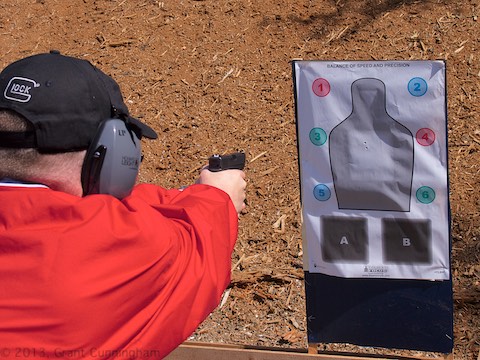
Want to stay safer? Don’t draw attention to yourself. Here’s how.
Part of staying safe is not drawing attention to yourself — the kind of attention that makes you a target. That’s easier said than done, but it’s a necessary part of your defensive plans.
I’ve said in the past that situational awareness is in reality managing distractions: not allowing yourself to get inappropriately consumed by any one thing. There’s more to it, of course (active watching is the other big part), but making sure that you’re not distracted is crucial to making everything else work.
The external equivalent of situational awareness is situational discretion: not making a distraction of yourself. In other words, not doing things that increase your target profile.
Let’s use an easy example: if, for instance, you leave an expensive laptop computer on the front seat of your car, in full view of passers-by, you’ve simply made it more attractive for a thief to make off with it. (I know, it “shouldn’t” be that way and we “shouldn’t” need to worry about thieves, but we live in the real world — the one where we do have to pay attention to such things!) The crook knows it’s there, knows its value, and knows that he can grab it and run in a matter of seconds. It is an attractive target, and it wouldn’t be if it were hidden under the seat where the thief couldn’t see it.
Let’s apply the same concept to your personal behavior: by the same token, it’s a very bad idea to go into the worst section of town, at night, sporting a Rolex and lots of diamonds. It doesn’t take a rocket scientist to figure out it’s like putting out a plate of fresh meat in the middle of a pack of starved Rottweilers. Some things simply shouldn’t be done!
Part of preventing attacks is lowering your victim profile, and the way you can do that is to blend in with your surroundings, to make it look like you have nothing remarkable to offer a predatory criminal.
Blending in is a defensive tool, just like your situational awareness and your firearm. If you blend into the crowd, if you don’t stand out, you’re not as easily marked as a target by the criminal predators in your midst. They look for target markers, those things that tell them you’re different, you have something they want, or you’re more easily overcome than the rest of the crowd. Not attracting their attention in the first place is a very good way to avoid an attack — and isn’t that really what self defense is all about?
Part of blending in for concealed carriers is not advertising the fact that you’re armed. Too many concealed carriers walk around with obvious outlines of guns underneath their clothing (see it all the time); by wearing popular “concealment” products (like vests and other obvious “gun guy” clothing); or just by acting like they have a gun (by pulling up their belts, pulling down their shirts, or doing the “checking to make sure it’s still there” feel.)
I’ve heard all the arguments: no one can really tell unless they’re into guns, which means that only cops and crooks know you’re armed, and doing so is therefore some sort of deterrent and you’re being a good sheepdog (or watchdog or hotdog or whatever.)
The reality is twofold: first, you’re likely to make yourself a target (guns are valuable and easily disposed of on the street); second, you make the people around you who aren’t carrying nervous (not necessarily because they can tell you have a gun, but because they know something is wrong even if they can’t put their finger on it.)
In public it’s the first concern which is paramount; in private settings, such as your office, the second becomes more important. No, your co-workers are unlikely to attack you, but if you work in a non-permissive environment it could lead to economic consequences.
Think you blend? Think the rest of the world doesn’t know you’re carrying because you’ve never noticed people looking at you? As Claude Werner has pointed out, that’s just not true; you stick out, attract attention, more than you think you do. As Melody Lauer found out this week, it’s sometimes surprising what one or two little details can do to make you stick out like a sore thumb — or, conversely, to simply disappear into a crowd.
Melody wrote a blog post about her experiences with blending in on a recent trip to Hollywood; it is, I think, one of the more important articles on the topic that I’ve read in a long time, and I strongly suggest you read it too. Yes, it’s about women’s dress, but the principles she talks about apply to men, too — we just don’t wear pearls.
-=[ Grant Cunningham ]=-
- Posted by Grant Cunningham
- On March 17, 2015



